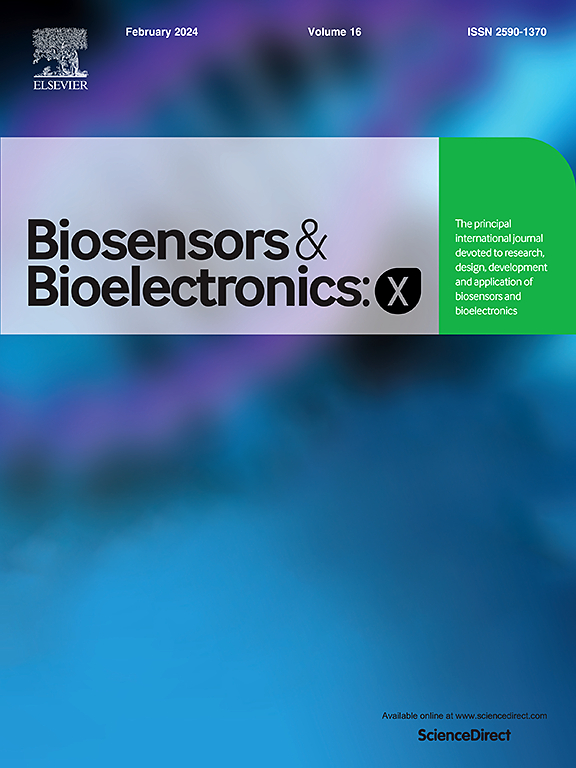用于检测细胞内脂滴含量的靶向生物传感器
IF 10.61
Q3 Biochemistry, Genetics and Molecular Biology
引用次数: 0
摘要
脂滴参与许多活细胞的新陈代谢过程,其异常与脂肪肝、糖尿病和癌症等多种疾病高度相关。然而,目前的方法还不足以阐明各种疾病与脂滴之间的关系。特别是,如何观察脂滴分布异常的肿瘤仍然是一个重大挑战。因此,通过低毒性香豆素衍生物与高亲水性羟基端聚乙二醇的共聚,合成了一种具有脂滴特异性的水溶性生物传感器。用脂滴生物传感器培养 HeLa 细胞 24 小时的存活率平均超过 90%,且毒性较低。脂滴共定位成像实验表明,该生物传感器能很好地靶向 HeLa 细胞中的脂滴。不同细胞系对生物传感器的反应实验结果表明,肿瘤细胞对生物传感器具有良好的反应和吸收能力。这些结果表明,制备的生物传感器具有良好的区分正常细胞和肿瘤细胞的功能,为临床肿瘤的早期诊断提供了实验依据。本文章由计算机程序翻译,如有差异,请以英文原文为准。
Targeted biosensors for intracellular lipid droplet content detection
Lipid droplets participate in the metabolic process of many living cells, and their abnormalities are highly correlated with many diseases such as fatty liver, diabetes, and cancer. Nevertheless, the current methods are inadequate for elucidating the relationship between diverse diseases and lipid droplets. In particular, the visualization of tumors with abnormal distribution of lipid droplets remains a significant challenge. Therefore, a water-soluble biosensor with lipid droplet specificity is synthesized by copolymerization of coumarin derivatives with low toxicity and high hydrophilic hydroxyl terminal polyethylene glycol. The survival rate of HeLa cells cultured with lipid drop biosensor for 24 h was more than 90% on average, and the toxicity was less. The co-localization imaging experiments with lipid droplets showed that the biosensor had a good ability to target lipid droplets in HeLa cells. The experimental results of the response of different cell lines to the biosensor showed that the tumor cells had a good response and uptake ability. These results indicate that the prepared biosensor has a good distinguishing function between normal cells and tumor cells, and provides an experimental basis for the early diagnosis of clinical tumors.
求助全文
通过发布文献求助,成功后即可免费获取论文全文。
去求助
来源期刊

Biosensors and Bioelectronics: X
Biochemistry, Genetics and Molecular Biology-Biophysics
CiteScore
4.60
自引率
0.00%
发文量
166
审稿时长
54 days
期刊介绍:
Biosensors and Bioelectronics: X, an open-access companion journal of Biosensors and Bioelectronics, boasts a 2020 Impact Factor of 10.61 (Journal Citation Reports, Clarivate Analytics 2021). Offering authors the opportunity to share their innovative work freely and globally, Biosensors and Bioelectronics: X aims to be a timely and permanent source of information. The journal publishes original research papers, review articles, communications, editorial highlights, perspectives, opinions, and commentaries at the intersection of technological advancements and high-impact applications. Manuscripts submitted to Biosensors and Bioelectronics: X are assessed based on originality and innovation in technology development or applications, aligning with the journal's goal to cater to a broad audience interested in this dynamic field.
 求助内容:
求助内容: 应助结果提醒方式:
应助结果提醒方式:


